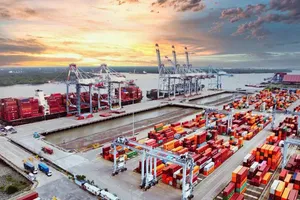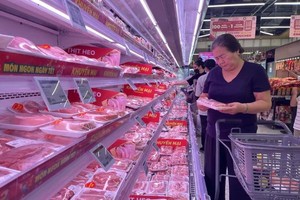
The ASEAN-Australia- New Zealand Free Trade Agreement (AANZFTA), which took effect from January 1, 2010, plays a key role in enhancing economic relations, trade and investment between ASEAN and Australia and New Zealand, Nam said.
Within the agreement framework, ASEAN countries can enjoy 90 to 100 per cent tariff reductions in Australian and New Zealand markets, and Vietnamese firms should take full advantage of this potential, he said.
He noted that Australia and New Zealand were among the biggest importers in the world since both economies are largely dependent on imported products.
Vietnam’s chief exports to these two markets include agricultural products, seafood, coffee beans, cashews, electronics parts, textiles, footwear and construction material.
If the AANZFTA was utilized well, Vietnamese producers could enjoy all the privileges contained therein, boosting export turnover and earning handsome profits, Nam said.
Statistics from the Ministry of Industry and Trade showed that trade between Vietnam and Australia hit 5.26 billion USD in 2016, up 6.5 percent year-on-year. Particularly, Vietnam enjoyed trade surplus of 480 million USD with Australia in the year.
According to Phan Thi Dieu Linh, expert from the Department of Asia-Pacific Market, although Australian consumers are favoured of locals products, they are still open with imported ones, which have high quality, good looking and rational prices. This factor also facilitates Vietnamese exports, she underlined.
Meanwhile, Trinh Thi Thu Hien from the Foreign Trade Agency under the Ministry of Industry and Trade, stated that there is large room for Vietnamese shipments to Australia as export revenue is still humble, standing at 1.6 percent of total export values in Australia.
Hien said that the AANZFTA is being carried out in the context of deeper regional and global integration which supports the development in Vietnam-Australia and New Zealand relations. Domestic businesses should apply international standards to meet increasing demands of foreign customers and become more competitive with foreign rivals, she highlighted.
Within the agreement framework, ASEAN countries can enjoy 90 to 100 per cent tariff reductions in Australian and New Zealand markets, and Vietnamese firms should take full advantage of this potential, he said.
He noted that Australia and New Zealand were among the biggest importers in the world since both economies are largely dependent on imported products.
Vietnam’s chief exports to these two markets include agricultural products, seafood, coffee beans, cashews, electronics parts, textiles, footwear and construction material.
If the AANZFTA was utilized well, Vietnamese producers could enjoy all the privileges contained therein, boosting export turnover and earning handsome profits, Nam said.
Statistics from the Ministry of Industry and Trade showed that trade between Vietnam and Australia hit 5.26 billion USD in 2016, up 6.5 percent year-on-year. Particularly, Vietnam enjoyed trade surplus of 480 million USD with Australia in the year.
According to Phan Thi Dieu Linh, expert from the Department of Asia-Pacific Market, although Australian consumers are favoured of locals products, they are still open with imported ones, which have high quality, good looking and rational prices. This factor also facilitates Vietnamese exports, she underlined.
Meanwhile, Trinh Thi Thu Hien from the Foreign Trade Agency under the Ministry of Industry and Trade, stated that there is large room for Vietnamese shipments to Australia as export revenue is still humble, standing at 1.6 percent of total export values in Australia.
Hien said that the AANZFTA is being carried out in the context of deeper regional and global integration which supports the development in Vietnam-Australia and New Zealand relations. Domestic businesses should apply international standards to meet increasing demands of foreign customers and become more competitive with foreign rivals, she highlighted.
























